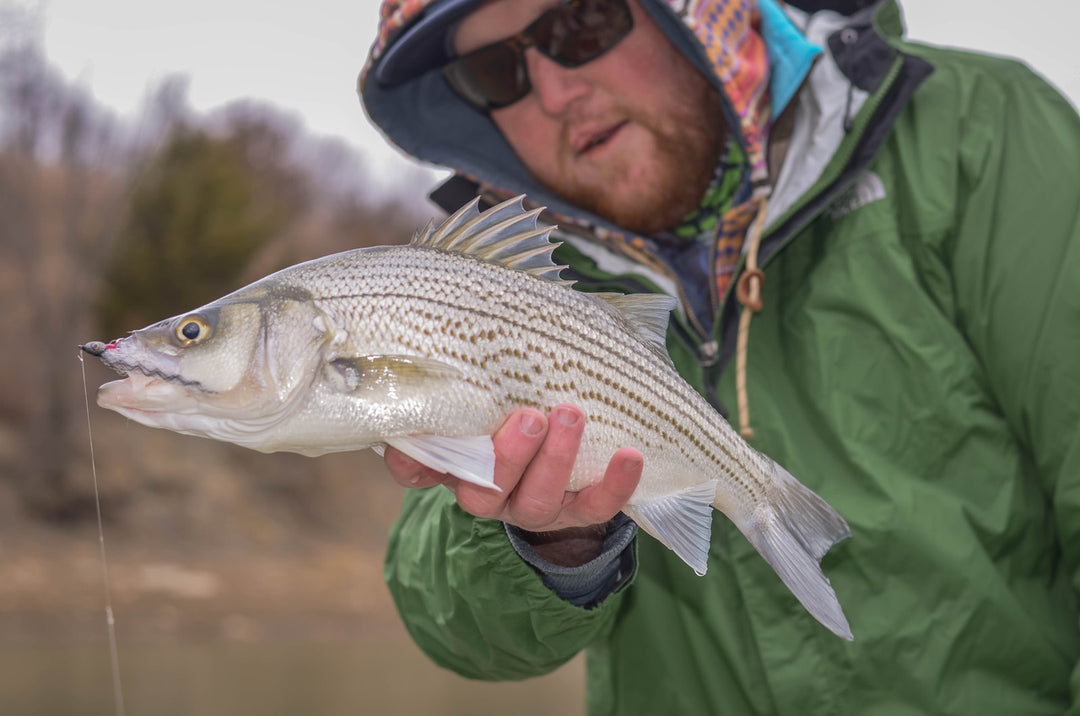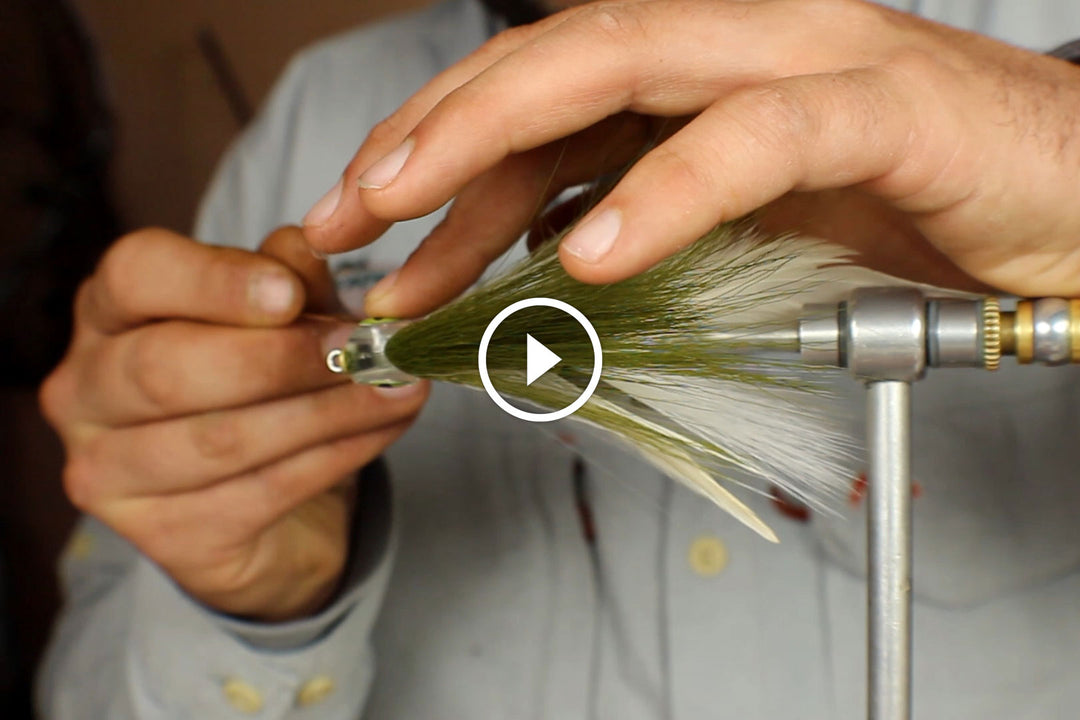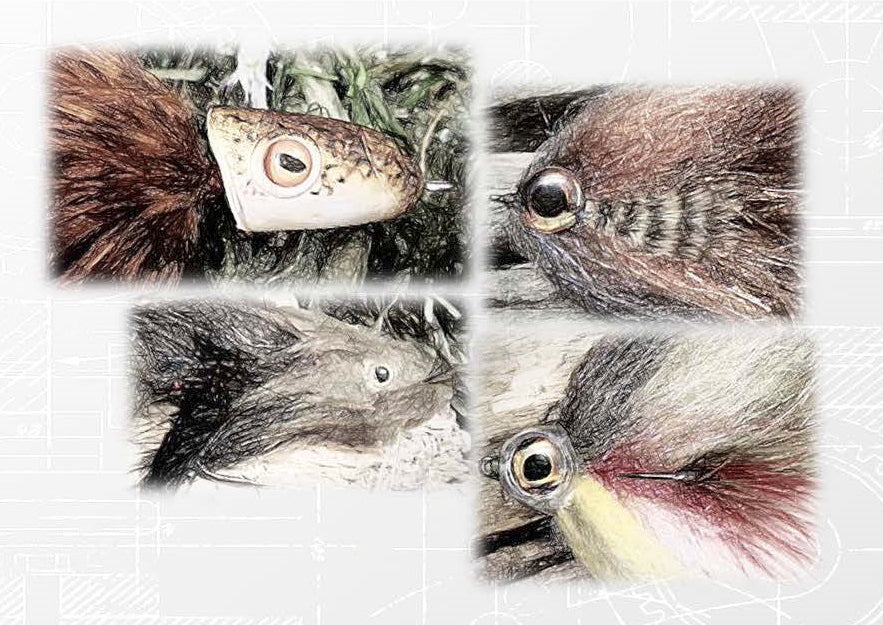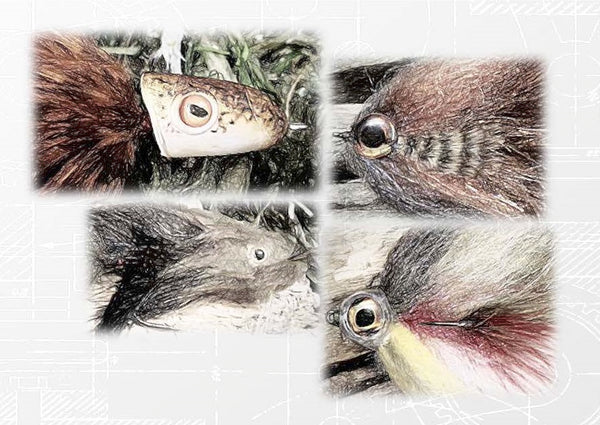Flymen Blog
As a Commercial Tyer, I Always Tie My Flies in Large Batches.
Efficiency is the name of the game here, and being that I produce over 50,000 flies per year, I've developed some methods to boost my fly output over time. Here are some simple tricks, some of which I've been using for well over a decade, that you can use to make your own fly tying quicker and easier.

Over the last few years I've spent the majority of my fishing time chasing whites, hybrids, and the occasional striper around the Midwest.
While the Clouser Minnow is the staple fly for most temperate bass, sometimes you've got to shake things up a bit. The Clouser would be the equivalent of a Hare’s Ear nymph in the trout world; you can almost always get fish to eat it, but it may not be the most productive at that given time. Consider it like Sex Panther Cologne: “60% of the time it works every time." With that being said, I would never go on a white/hybrid bass fishing trip without a box of Clousers.
Fly tyers before us had to work hard to get the most out of their feathers and hair, but with new fly tying materials readily available in today's market we have the ability to alter the action and profile of the fly relatively easily.
Here are some things to consider to shake it up and get a more diversified bass fly box.

A fly designed to draw out the big predatory fish.
Massive streamers don't have to mean sore shoulders from casting all day. This large variation of the Double Deceiver streamer is kept light and easy to cast with the combination of Fish-Skull Faux Bucktail, which sheds water, and Body Tubing, which helps create the illusion of a large body without adding too much bulk. A Big Game Shank gives it lifelike movement, and it's cleanly finished off with a Fish-Mask and Surface Seducer Dragon Eyes. Learn to tie it today!
Fly tying season is upon us.
I don't know about you, but before I started tying flies full time I would get super excited at the beginning of fly tying season only to have my excitement fade into disappointment heading into spring when the fishing started to get going and I hadn't even tied 10% of the flies I planned on tying.
It doesn't have to be this way for you.

While I’m always excited to catch any fish regardless of size, the level of excitement goes up exponentially when casting for predatory fish like musky and pike.
There is something seemingly primal about these fish — maybe it’s all their teeth in that crooked grin. There are a couple of puzzles to figure out when designing and tying big flies for big fish.
To get bigger fish interested in your flies, they have to be of sizable equity to the fish. In other words, you throw a big fly to a big fish because they need a bigger meal to sustain their weight. Smaller patterns will more often than not get the results that a larger fly will, especially in waters known to house bigger fish.
Big flies can often be mistaken for a lot of materials stacked onto a hook. The more materials you tie on a hook, the heavier it will be. With some musky flies being a foot long, you don’t want your arm to fall off halfway through a fishing trip.






